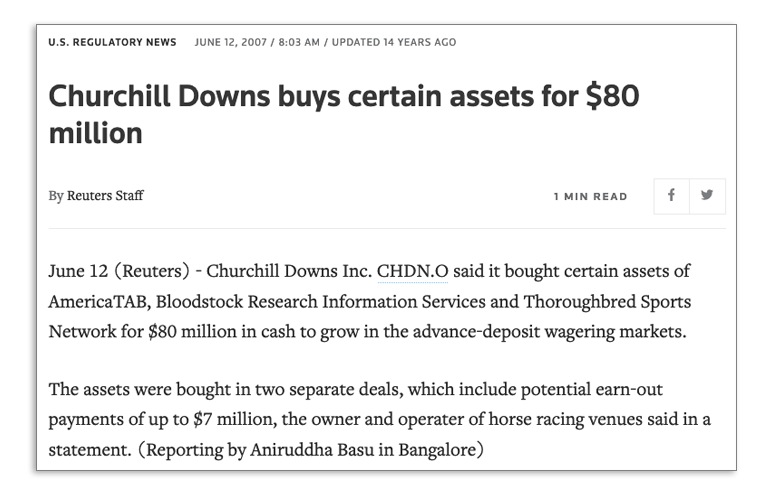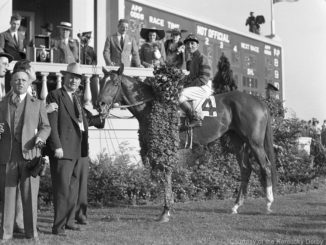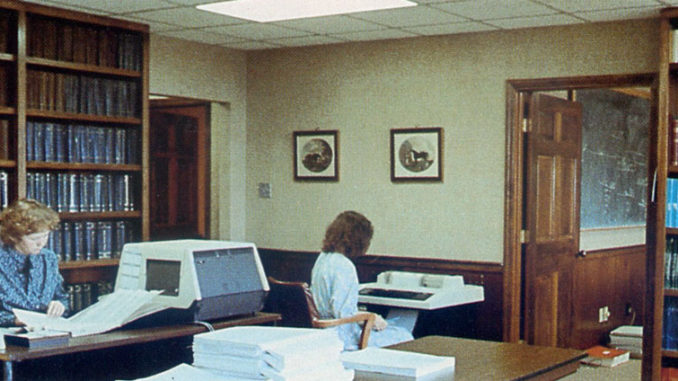
Each summer I would have a different program. One summer I’d work with yearlings, another summer I’d work with broodmares…I got to work with some of the greatest broodmares…like Dahlia and Goofed.
Happy Broadbent
Just as it would have been hard for Brisnet.com founder Richard F. Broadbent III to avoid getting involved in the Thoroughbred business, having married into one of the industry’s most prominent families, it’s difficult to see how the bug would not have also bitten the next generation of Broadbents, in particular his eldest son, Richard IV, colloquially known as Happy.
HANSON: Brisnet at 50 Part 1: The beginnings
From a young age, Happy Broadbent had designs on pursuing a career on the farm and breeding side of the business, rather than follow his father into the office. The elder Broadbent dutifully arranged for his son to receive as complete an education as possible, starting from the ground up.
“He felt it was important for me to learn about every facet of the business, especially from a farm perspective,” Happy Broadbent said. “From when I was about 10 or 11, I had opportunities through him to work at some of the biggest farm operations in central Kentucky. Each summer I would have a different program. One summer I’d work with yearlings, another summer I’d work with broodmares. One of the first jobs I had was working at (Nelson Bunker Hunt’s) Bluegrass Farm. I got to work with some of the greatest broodmares he ever had, like Dahlia and Goofed.
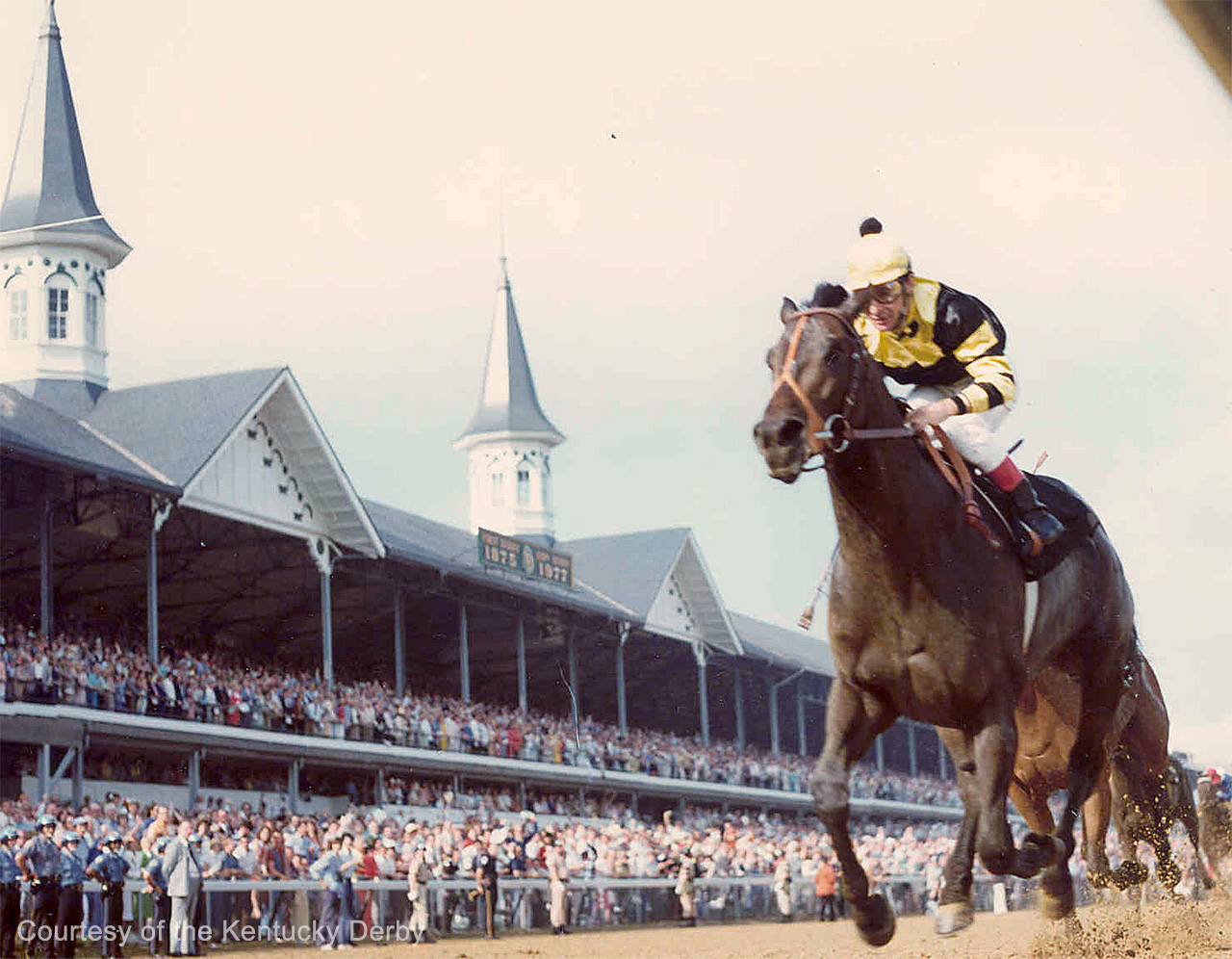
(Photo by Kentucky Derby/Churchill Downs)
“In 1981 I worked at Spendthrift Farm, rubbing the first crop of yearlings by Seattle Slew prior to the sales. It was a real neat ride to see how that whole operation worked. John Williams, who was the general manager at the time, is one of the most respected farm managers that’s ever been around, and I learned a tremendous amount from him.”
Happy Broadbent graduated from the University of Kentucky and then became heavily involved in the family’s Crestview Farm breeding operation. However, after enduring a couple cold winters, Happy Broadbent felt office work didn’t look so bad and changed course. In 1986 he started learning from the ground up again, this time at Bloodstock Research.
“The time I spent working for (my dad) every day was a learning experience,” Happy Broadbent said. “The amount of knowledge I learned working for him was incredible. It was not as much a father-son relationship as it was more who I worked for. That’s the way it was, mostly all business.”
After enduring a few cold winters, Happy Broadbent felt office work didn’t look so bad…
Happy Broadbent’s arrival at Bloodstock Research coincided with increasingly leaner times for the industry. The bloodstock bubble of the early and mid-1980s, during which some yearlings had commanded prices in the eight figures at auction, had begun to burst. This was precipitated in large part by the Tax Reform Act of 1986, which made investing in horses and bloodstock less appealing, thus driving many owners and breeders under water or out of the business altogether.
Also around that time Bloodstock Research began to see the rise of competitors to its core business. No longer would it enjoy a virtual monopoly.
Competition and Innovation
“From 1975 to 1985 we were the only company that had computerized pedigree data,” Happy Broadbent said. “The Jockey Club was seeing the success we were having and came in and tried to acquire the business. We didn’t have any desire to sell, and they let us know if we didn’t they would compete against us. We knew that was coming and, in turn, we had to transition into some other areas.”
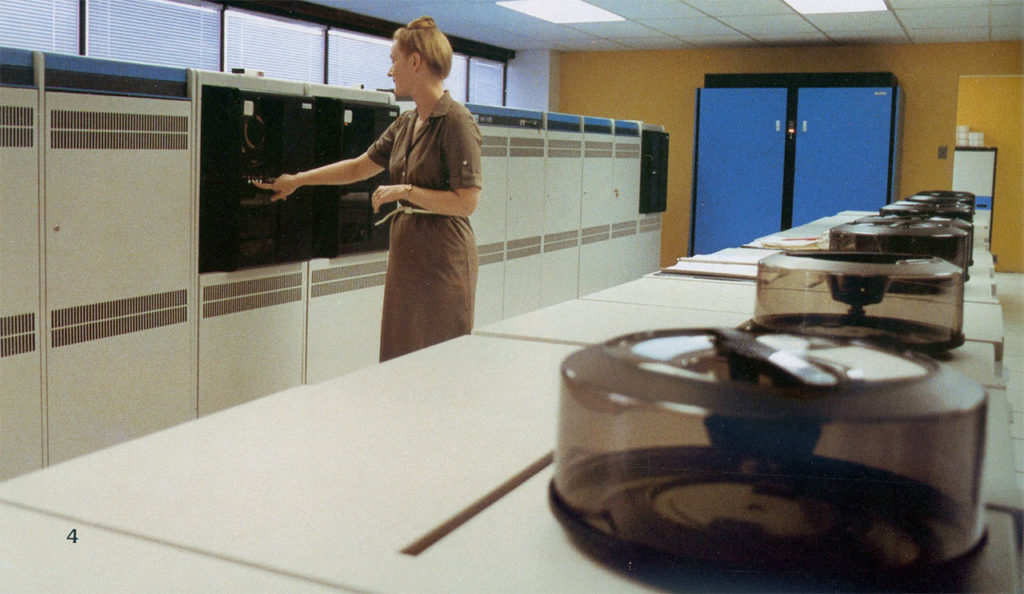
Among Richard Broadbent’s new creations was the Thoroughbred Times, a competitor to the more established weeklies Thoroughbred Record and Blood-Horse. The Times and Record later merged under different ownership. Broadbent also founded, with Barry Weisbord, the Thoroughbred Daily News (TDN). After Weisbord’s acquisition of Broadbent’s share in the publication, Bloodstock Research continued to supply data and information to TDN.
Bloodstock Research also partnered with Fasig-Tipton to open Stallion Access, a computerized exchange that allowed traders to buy and sell stallion seasons and shares instantaneously online.
Richard Broadbent’s next big idea was to use the pedigree data at his disposal to create and sell handicapping products previously unavailable elsewhere, either in Daily Racing Form or a track program. It was a timely innovation as intrastate and interstate simulcasting was growing rapidly throughout the country at the time.
“Our company strived on creating value-added products. We did that within the pedigree business, so we knew we could do that within the handicapping business,” Happy Broadbent said.
Setting out to find the best programmers and young talent…Richard Broadbent took a train to California and tabbed a San Diego State senior, Corby Corbett, to come to Kentucky…
Setting out to find the best programmers and young talent to develop what would become the Handicappers Database, a dial-in service to the company’s mainframe, Richard Broadbent took a train to California and tabbed a San Diego State senior, Corby Corbett, to come to Kentucky and help create it.
“Corby’s knowledge before he started working for us was that he had ready every handicapping book that you could possibly read,” Happy Broadbent said. “He had extensive knowledge from going to the races. It was basically a dream job for him to come and work for us.”

In addition to its own proprietary information, like pedigree statistics, the Handicappers Database was actually the first place one could access the speed figures developed by noted handicapper and turf writer Andrew Beyer.
“We had them in our past performances before The Racing Times and Daily Racing Form,” Happy Broadbent said. “There were a lot of holes in the past performances, though, as Beyer only covered certain tracks. That’s what motivated us to offer our own computerized speed ratings for all tracks, all surfaces, and all distances. There weren’t going to be any holes.”
Although the development of the Handicappers Database started off well, an out-of-state bank that had lent money to Bloodstock Research to fund that investment decided to sever its ties with the industry.
“We were about halfway through the project we thought was going to take us to develop all the different products, but then they pulled our line of credit,” Happy Broadbent said. “They didn’t want to be in the horse business anymore.
“We scraped along and had some pretty difficult times financially,” Broadbent added. “A lot of people don’t know this, but the company almost went into bankruptcy in 1993. Trying to survive was the key.”
Going Mainstream
A turning point, though, was the mainstreaming of the internet, which widened the company’s exposure and made accessing the company’s databases more cost-effective to a wider swath of customers than the old dial-in service.
“By 1996 our business was really taking off, thanks to the internet,” Happy Broadbent said.

Although the worst had been avoided, Richard Broadbent was never one to rest on his laurels.
“We were constantly thinking what we could do to stay three or four years ahead of the competition,” Happy Broadbent said. “By that time I was pretty much running the day-to-day operations of the business. I look back and see the success of working with my dad for 23 years was that I complemented him. I was able to put my strengths into what I was good at doing, which was running the day-to-day operations, and let him sit back and really be the thinker about what sort of things we should be doing next. It worked pretty well for us.”
Richard Broadbent’s next and final contribution to securing the company’s long-term future was to make it not only a place to purchase handicapping products, but also as a platform for customers to apply that information through betting.
Advancing
“We made a decision as a company that, if we were going to stay competitive, we needed to get into the ADW (Advance Deposit Wagering) business,” Happy Broadbent said. “If we weren’t able to offer them one-stop shopping, we would lose those customers to ADW providers that were out there.”
Starting from scratch in 1998 Brisnet started developing its own ADW interface, which would be introduced three years later. With the help of a friend of Richard Broadbent’s, Amtote president Ted Mudge, Brisnet partnered with Beulah Park operator Charlie Ruma, who along with some very talented in-house programmers ran a successful telephone wagering service for Ohio residents. The resulting ADW, called AmericaTAB, had several platforms, one of which was Brisbet.com.
“Brisbet had about 65 percent of the handle of the betting service,” Happy Broadbent said.
While the business hummed along in the mid-2000s, Richard Broadbent was approaching retirement age and had begun finding other areas of life more spiritually fulfilling.
“Even though the company was doing very well, he was losing interest,” Happy Broadbent said. “He had other interests, specifically a ministry he set up called Christian Word Ministries. We were getting inquiries from other entities that were interested in buying us. The phone was ringing off the hook.
“He would listen to some of the folks that would come in, but the big thing was that he wasn’t going to sell the business to anyone that was going to dismantle it. That was very important to him from an employees’ standpoint. We had a very dedicated team of folks that had been here for many, many years.”

Turning down offers from companies he wasn’t comfortable selling to, Broadbent eventually began talking with Churchill Downs Inc., which was developing its own ADW called TwinSpires.com.
“Churchill Downs came over and spoke to us in September 2006, basically to learn more about what we were doing from top to bottom. More of a fact-finding mission on their part,” Happy Broadbent said. “After a few months investigating what it would take to build what they needed, they decided it was better to acquire a business like ours instead of building from scratch.
“In February 2007 they approached us with an interest in buying the business. Bob Evans (then the Churchill Downs Inc. CEO) heard all about what our concerns were. We had some tough negotiations during that time. There were many times I’d hear my dad say, ‘I’m not going to sell it to them.’ The next thing you know, we’d be on track again. After going through all the due diligence, on June 12, 2007, Churchill Downs acquired the business.”
Thus opened a new chapter for Brisnet, the subject of our forthcoming Part 3.
